 W
WAlston's brown mouse, also called Alston's singing mouse, short-tailed singing mouse, or singing mouse, is a species of rodent in the family Cricetidae. It is found in Central America, from Chiapas, Mexico, to western Panama.
 W
WThe armored rat is a species of rodent in the family Echimyidae. It is monotypic within the genus Hoplomys. It is found in Latin America, from northern Honduras to northwest Ecuador. It possesses a range of spines on its back and sides of the body.
 W
WBangs's mountain squirrel is a poorly known species of tree squirrel, that only lives in Costa Rica and Panama. It can be found in mountain rain forests at an altitude between 1,900 and 2,600 metres, and lives mainly in the tree tops, but sometimes on the forest floor as well. One of its habitats is at the summit of the Poás Volcano in Costa Rica, in a Clusia forest that is almost inaccessible to humans.
 W
WThe big-eared climbing rat is a species of rodent in the family Cricetidae. It is found in Central America from Mexico to Costa Rica.
 W
WThe Central American agouti is a species of agouti from the family Dasyproctidae. The main portion of its range is from Chiapas and the Yucatan Peninsula, through Central America, to northwestern Ecuador, Colombia and far western Venezuela. A highly disjunct population is found in southeastern Peru, far southwestern Brazil, Bolivia, western Paraguay and far northwestern Argentina. The disjunct population has been treated as a separate species, the brown agouti, but a major review of the geographic variation is necessary. The Central American agouti has also been introduced to Cuba and the Cayman Islands.
 W
WThe Central American dwarf squirrel, also known as Alfaro's pygmy squirrel,(Microsciurus alfari) is a small tree squirrel in the genus Microsciurus and tribe Sciurini found in Colombia, Costa Rica, Nicaragua, and Panama. No species of squirrel within this genus are endangered, but they are rarely seen because they are shy and live hidden lives. This suggests that their population numbers may be larger than documented.
 W
WThe Coiban agouti is a species of rodent in the family Dasyproctidae. It is endemic to the island of Coiba (Panama) and resembles the more widespread Central American agouti. It is threatened by habitat loss.
 W
WDeppe's squirrel is a species of tree squirrel in the genus Sciurus native to Belize, Costa Rica, El Salvador, Guatemala, Honduras, Mexico, and Nicaragua.
 W
WDesmarest's spiny pocket mouse is a species of rodent in the family Heteromyidae. It is found in Colombia, Costa Rica, El Salvador, Guatemala, Honduras, Mexico, Nicaragua, and Panama.
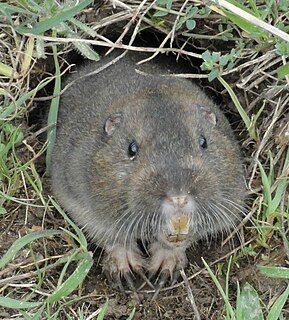 W
WPocket gophers, commonly referred to as just gophers, are burrowing rodents of the family Geomyidae. The roughly 35 species are all endemic to North and Central America. They are commonly known for their extensive tunneling activities and their ability to destroy farms and gardens.
 W
WHatt's vesper rat, also known as Hatt's vesper mouse or Yucatán vesper rat, is a species of rodent in the family Cricetidae. It is the only species in the genus Otonyctomys. It is named for its discoverer, Robert T. Hatt.
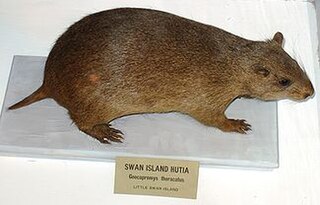 W
WThe Little Swan Island hutia is an extinct species of rodent that lived on the Little Swan Island, off northeastern Honduras in the Caribbean. It was a slow-moving, guinea-pig-like rodent and probably emerged from caves and limestone crevices to forage on bark, small twigs and leaves.
 W
WThe lesser capybara is a large semiaquatic rodent of the family Caviidae found in eastern Panama, northwestern Colombia, and western Venezuela. The lesser capybara was described as a species in 1912, but later demoted to a subspecies of the capybara. Following studies of anatonomy and genetics in the mid-1980s, it was recommended that it again should be recognized as a separate species, and this gained more widespread recognition in 1991, although some continue to consider it a subspecies.
 W
WThe lowland paca, also known as the spotted paca, is a large rodent found in tropical and sub-tropical America, from east-central Mexico to northern Argentina, and has been introduced to Cuba and Algeria.
 W
WMelanomys caliginosus, also known as the dusky melanomys or dusky rice rat, is a species of rodent in the genus Melanomys of family Cricetidae. It is found from Central America, in Honduras, Nicaragua, Costa Rica, and Panama, into South America, where it occurs in Venezuela, Colombia, and Ecuador. Populations currently classified under M. caliginosus may in fact include more than one species.
 W
WMicrosciurus or dwarf squirrels is a genus of squirrels from the tropical regions of Central and South America.
 W
WThe Aztec mouse is a species of rodent in the family Cricetidae, native to southern Mexico and parts of Central America.
 W
WNephelomys devius, also known as the Talamancan oryzomys, Boquete rice rat, Chiriqui rice rat, or montane rice rat, is a species of rodent in the genus Nephelomys of family Cricetidae. It is found in cloud forest in the highlands of Costa Rica and western Panama.
 W
WNephelomys pirrensis, also known as the Mount Pirre rice rat, is a species of rodent in the genus Nephelomys of family Cricetidae. Its type locality is at Mount Pirri or Pirre in eastern Panama, at an altitude of 4,500 feet (1,400 m), and it has also been recorded on Mount Tacarcuna.
 W
WOecomys trinitatis, also known as the long-furred oecomys, long-furred rice rat, Trinidad arboreal rice rat, or big arboreal rice rat, is a species of rodent in the genus Oecomys of family Cricetidae. As currently constituted, it has a wide distribution in Central America and South America, being found in southern Costa Rica, Panama, Colombia, Venezuela, Trinidad and Tobago, Guyana, Suriname, French Guiana, much of Brazil, eastern Ecuador, and eastern Peru. It may in fact include more than one species.
 W
WOligoryzomys fulvescens, also known as the fulvous colilargo, fulvous pygmy rice rat, or northern pygmy rice rat, is a species of rodent in the genus Oligoryzomys of family Cricetidae. It is found from southern Mexico through Central America into South America, where it occurs south into Peru and Brazil, and includes numerous synonyms, including the type species of the genus, Oryzomys navus Bangs, 1899. The taxonomy of this species is unresolved, and it may be found to contain more than one species. Its karyotype has 2n = 54-60 and FNa = 68–74.
 W
WOryzomys couesi, also known as Coues' rice rat, is a semiaquatic rodent in the family Cricetidae occurring from southernmost Texas through Mexico and Central America into northwestern Colombia. It is usually found in wet habitats, such as marshes, but also lives in drier forests and shrublands. Weighing about 43 to 82 g, O. couesi is a medium-sized to large rat. The coarse fur is buff to reddish above and white to buff below. The hindfeet show some specializations for life in the water, such as reduced ungual tufts of hair around the digits. It has 56 chromosomes. There is much geographic variation in size, proportions, color, and skull features. Oryzomys couesi is active during the night and builds nests of vegetation that are suspended among reeds about 1 m (3.3 ft) above the ground. It is an excellent swimmer and dives well, but can also climb in vegetation. An omnivore, it eats both plant and animal food, including seeds and insects. It breeds throughout the year; females give birth to about four young after a pregnancy of 21 to 28 days. The species may be infected by several different parasites and by two hantaviruses.
 W
WOryzomys dimidiatus, also known as the Nicaraguan oryzomys, Thomas's rice rat, or Nicaraguan rice rat, is a rodent in the genus Oryzomys of the family Cricetidae. It is known from only three specimens, all collected in southeastern Nicaragua since 1904. Placed in Nectomys upon its discovery, it was later classified in its own subgenus of Oryzomys and finally recognized as closely related to other species now placed in Oryzomys, including the marsh rice rat and Oryzomys couesi, which occurs in the same region.
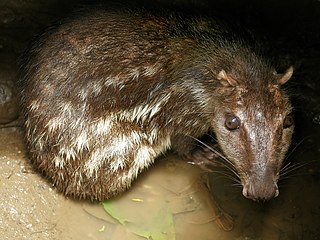 W
WA paca is a member of the genus Cuniculus of ground-dwelling, herbivorous rodents in South and Central America. It is the only genus in the family Cuniculidae. They are large rodents with dots and stripes on their sides, short ears, and barely visible tails. They are also referred to as "gibnuts" or "royal rats".
 W
WThe Panamanian climbing rat is a species of rodent in the family Cricetidae. It is endemic to Panama.
 W
WThe Panamanian spiny pocket mouse, also known as Peter's spiny pocket mouse, is a species of heteromyid rodent endemic to Panama. It is very closely related to Salvin's spiny pocket mouse, and has been placed in the same species group by some authors. It was formerly placed in the genus Liomys, which is now recognized to be paraphyletic and has been subsumed into Heteromys.
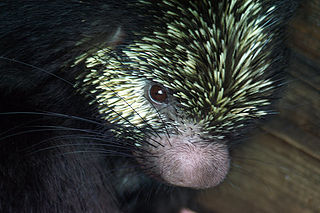 W
WThe Mexican hairy dwarf porcupine or Mexican tree porcupine is a species of rodent in the family Erethizontidae. It is found in Costa Rica, El Salvador, Guatemala, Honduras, Panama, Mexico, Nicaragua and Belize.
 W
WThe red-tailed squirrel is a largish tree squirrel distributed from southern Central to northern South America.
 W
WRichmond's squirrel is a poorly known tree squirrel in the genus Sciurus endemic to Nicaragua, which is likely a synonym of the Red-tailed squirrel. It is locally known as the ardilla del rama.
 W
WRothschild's porcupine, Coendou rothschildi, is a species of rodent in the family Erethizontidae. It is usually considered endemic to Panama. A population in western Ecuador belongs either to this species or to Coendou bicolor. Because of the confusion over its taxonomic status and because its ecology is little known, the IUCN has listed its conservation status as "data deficient".
 W
WThe Ruatan Island agouti, also called the Roatán Island agouti, is a species of agouti in the family Dasyproctidae. It is endemic to the island of Roatán, off the north coast of Honduras, and is threatened by habitat loss and hunting. There are no known subspecies.
 W
WThe rufous soft-furred spiny-rat, known as ratón espinoso meaning "spiny" or "thorny" rat in Spanish, is a species of rodent in the family Echimyidae. It is found in Colombia, Ecuador, and Panama. In November 2015, it was spotted for the first time in Osa, Costa Rica by the Costa Rican researcher Jim Córdoba-Alfaro.
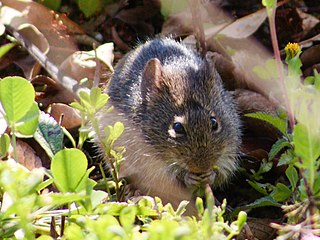 W
WThe southern cotton rat is a rodent species in the family Cricetidae. It is found from southern Chiapas in Mexico through Central America, except for Belize, and as far east as northern Colombia and Venezuela. It lives in tropical rainforest, dry forest and savanna, as well as in cultivated areas. The species is terrestrial and primarily diurnal. It was long thought to be a subspecies of S. hispidus. However, recent taxonomic revisions, based on mitochondrial DNA sequence data, have split the extensive former species range into three separate species. Carroll et al. (2004) indicate that the southern edge of the S. hispidus distribution is likely near the Rio Grande where it meets the northern distribution of S. toltecus. The range of S. toltecus extends from northern Mexico south into Chiapas where it occurs in sympatry with S. hirsutus . Rats from this species group have been used as laboratory animals.
 W
WNelson's spiny pocket mouse is a species of rodent in the family Heteromyidae. It is found in Mexico and Guatemala. Its natural habitat is subtropical or tropical moist lowland forests. It is threatened by habitat loss.
 W
WThe Mexican gray squirrel is a tree squirrel in the genus Sciurus native to Guatemala and eastern and southern Mexico. It has been introduced to the Florida Keys.
 W
WThe southern flying squirrel or the assapan is one of three species of the genus Glaucomys and one of three flying squirrel species found in North America. It is found in deciduous and mixed woods in the eastern half of North America, from southeastern Canada to Florida. Disjunct populations of this species have been recorded in the highlands of Mexico, Guatemala, and Honduras.
 W
WThe Yucatan squirrel, originally named the Yucatan gray squirrel, also once named the Campeche squirrel, is a tree squirrel in the genus Sciurus found in the Yucatán Peninsula and adjacent areas. It is native to northern Belize, northeastern Guatemala, and southeast Mexico.
 W
WSumichrast's vesper rat is a rodent of the family Cricetidae found from southern Mexico to Panama. It is named for the collector of the first specimen, and its closest relative is probably Hatt's vesper rat, a similar, but slightly smaller, species from the Yucatán Peninsula.
 W
WTome's spiny rat, also known as Tomes' spiny rat or the Central American spiny rat, is a species of spiny rat distributed from Honduras to Ecuador. The IUCN has assessed its conservation status as being of "least concern".
 W
WTransandinomys bolivaris, also known as the long-whiskered rice rat, is a rodent in the genus Transandinomys. It is found in humid forest from northeastern Honduras to western Ecuador, up to 1,800 m (5,900 ft) above sea level. Since it was first described in 1901 from Ecuador, six scientific names have been introduced for it, but their common identity was not documented until 1998 and the species has long been known under the name Oryzomys bombycinus, described from Panama in 1912. The name Oryzomys bolivaris was used before it was moved to the new genus Transandinomys with Transandinomys talamancae in 2006.
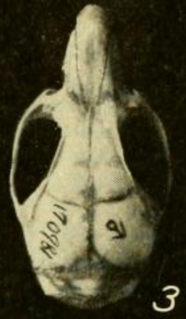 W
WTransandinomys talamancae is a rodent in the genus Transandinomys that occurs from Costa Rica to southwestern Ecuador and northern Venezuela. Its habitat consists of lowland forests up to 1,500 m (5,000 ft) above sea level. With a body mass of 38 to 74 g, it is a medium-sized rice rat. The fur is soft and is reddish to brownish on the upperparts and white to buff on the underparts. The tail is dark brown above and lighter below and the ears and feet are long. The vibrissae (whiskers) are very long. In the skull, the rostrum is long and the braincase is low. The number of chromosomes varies from 34 to 54.
 W
WThe variegated squirrel is a tree squirrel in the genus Sciurus found in Costa Rica, El Salvador, Guatemala, Honduras, southern Mexico, Nicaragua, and Panama. Fifteen subspecies are recognised. It is a common squirrel and the International Union for Conservation of Nature has rated it a "least-concern species". Variegated squirrels kept as pets in Germany have been implicated in the transmission of a bornavirus to humans from which three people have died.